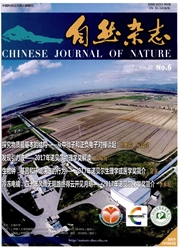

 中文摘要:
中文摘要:
揭示青藏高原生长过程和重建不同时期的古高度,是备受关注的科学问题。在青藏高原东北部,广泛分布的高大山系和盆地,是高原地貌演化的结果,也成为认识高原隆升过程的重要地质记录。对西宁盆地的沉积分析表明,这里的山盆体系在距今~50 Ma就开始发育,并相对稳定地持续到了16~10 Ma,表明这段时间高原东北部已经基本形成。在16~10 Ma,盆地河湖相沉积停止,遭受侵蚀、河流开始下切,指示这时有一次重要的构造活动和地面抬升。在~2.0 Ma以来,广泛发育的河流阶地序列(高度差达400 m以上),指示了气候变化和构造活动对地貌的影响;存在的数百米的河流阶地高差、河流侵蚀速率近10倍的增加是地面构造抬升控制河流下切的证据,指示青藏高原东北部在~2.0 Ma以来的抬升。西宁盆地及其周边山系地貌发育过程,可能是高原东北部隆升对欧亚和印度板块碰撞和挤压响应的体现。
 英文摘要:
英文摘要:
Growth and the uplift process of Qinghai-Tibetan Plateau is a long-time and widely interested in scientific issue. Coupling of the high mountain belts and the synorogenic basins distributed in northeastern Qinghai-Tibetan Plateau is a result of plateau growth; this coupled system is a very important geological archive of the plateau uplift during the Cenozoic era. Our investigations on sedimentary and landform evolution in the region of Xining Basin show that this mountain-basin system was formed since at least 50 Ma (million years) ago, the relatively stable fluvial-lacustrine deposition shows that this landform was persisted for a long time to 16-10 Ma. The depositional environment in this Basin was changed to incision at around 16-10 Ma ago reveals an significant tectonic movement and/or climate shift occurred during this time; the widely developed river terraces which are 400 meters in height difference, and 10 times increased in incision rate in this basin together reveal the important tectonic uplifts and climate shifts occurred -2.0 Ma ago. This case study of Xining Basin may indicate growth of northeastern Qinghai-Tibetan Plateau has responded to collision between Eurasia and Indian plates since the early Cenozoic era, -50 Ma ago.
 同期刊论文项目
同期刊论文项目
 同项目期刊论文
同项目期刊论文
 期刊信息
期刊信息
